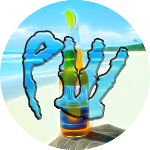Getting started with Notion
After stumbling across some YouTube videos, I’ve added Notion to my mix of tools. It’s a versatile app that uses blocks to create calendars, tasks, projects, notes, bullet lists, ToDo lists, link between pages, tables, and create a Wiki. Notes, tasks, and lists all exist together. The top section can be free form notes, the middle can be a task list, and the bottom can be bullet items.
Because it’s blocks, you can mix and match. You could create a list that links to multiple pages. You could create an outline with items that link to research topics. You can create a table with items and their due date. Each item in the table could link to a page where you store notes and research about the item.
It’s a very powerful and robust platform that mixes different kinds of data together. There is no switching to your task app, then over to your outline, then into your calendar. They can be grouped together.
While this is very flexible, it can be downright confusing. Since it’s plug and play, you have to decide what you need. You start with a blank canvas. This is great for experimentation, but can lead down a rabbit hole. There is a whole lot of, “What does this do?” I like that, but for some, it can be a big time waster.
Before jumping in, it’s best to watch some of the tutorials and productivity videos. There is a lot of good advice on setting up blocks and making templates.
I added Notion for a couple of reasons. The primary reason is to track blog articles. I can take notes, generate ideas, and research information across machines. I have a list of what I want to work on next, and cross them off when completed. I have a calendar showing what I’ve published and when.
I also have Notion on my iPad Pro, so I can write down ideas from multiple places. Notion is a web based app that’s available on Mac, Windows, iPad, and in a browser. I’m not a fan of SaaS, but Notion is getting it right.
As far as price goes, for my single user experience, it’s free. That is a lot of functionality at no cost. There are team versions if you need to collaborate or have big projects in the works.
So far, my experience has been a good one. My only real complaint is no offline mode. It’s 100% connectivity based. There is no local version of your work, so if don’t have a connection, Notion doesn’t display your work. It’s not that important right now since we aren’t moving around as much, but it would still be nice to have a local copy.
Since it’s a web app, there are a few minor limitations. Formatting is limited, export is little quirky, and “blocks” can be a little finicky at times. They don’t always move or respond the way you expect. However, the overall experience is very good and Notion is updating regularly.
I’m by no means taking full advantage of what Notion has to offer. There is project management and “database” services I haven’t touched. And most likely won’t need.
For my needs of plotting articles, notetaking, creating headers and subtopics, and working across different devices, it works very well.
The only thing you need to get started is to download the app for your OS and make a free account. That done, you can start playing around and exploring the sample projects.
